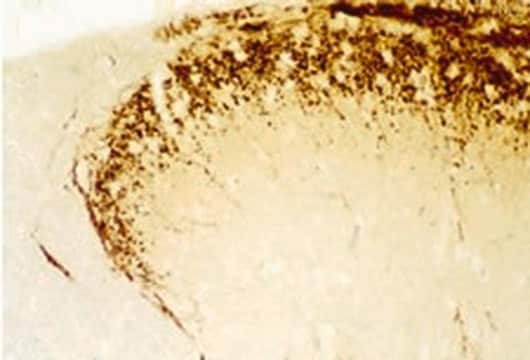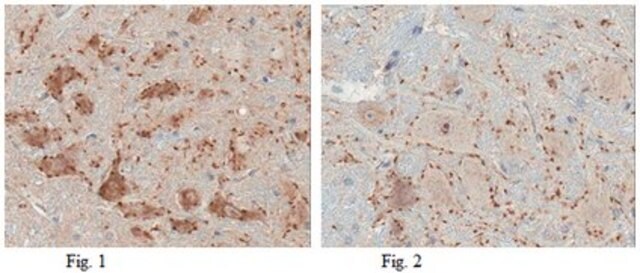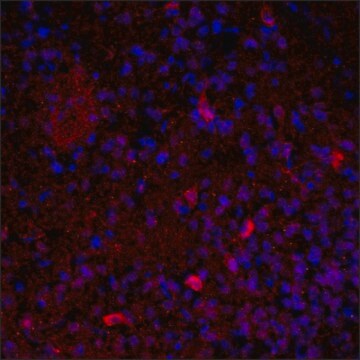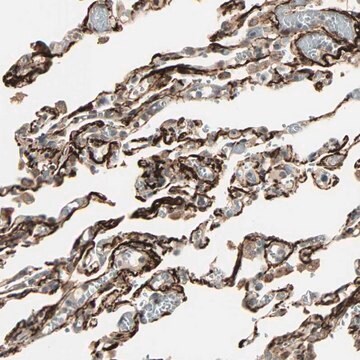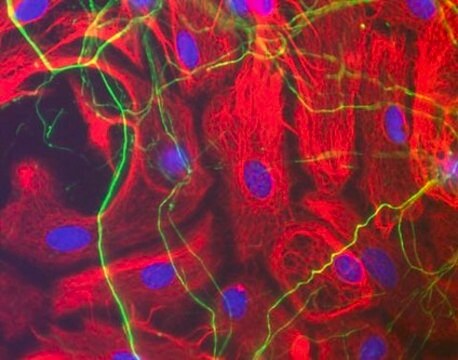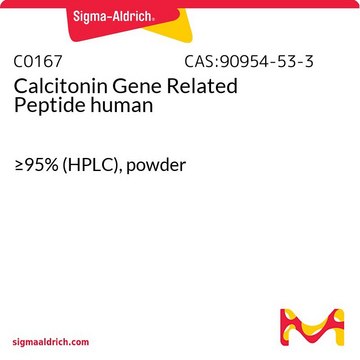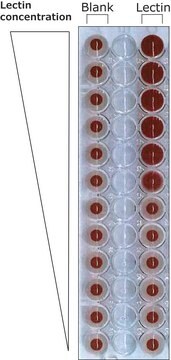Wichtige Dokumente
C7113
Anti-Calcitonin Gene-Related Peptide antibody, Mouse monoclonal
clone 4901, purified from hybridoma cell culture
Synonym(e):
Anti-CALC, Anti-CCALCI, Anti-CGRP-I
About This Item
Empfohlene Produkte
Biologische Quelle
mouse
Qualitätsniveau
Konjugat
unconjugated
Antikörperform
purified from hybridoma cell culture
Antikörper-Produkttyp
primary antibodies
Klon
4901, monoclonal
Form
buffered aqueous solution
Speziesreaktivität
rat, human, canine
Verpackung
antibody small pack of 25 μL
Konzentration
~2 mg/mL
Methode(n)
immunocytochemistry: suitable
indirect ELISA: 0.5 μg/mL using rat α-CGRP
neutralization: suitable
radioimmunoassay: suitable
Isotyp
IgG1
UniProt-Hinterlegungsnummer
Versandbedingung
dry ice
Lagertemp.
−20°C
Posttranslationale Modifikation Target
unmodified
Angaben zum Gen
human ... CALCA(796)
rat ... Calca(24241)
Allgemeine Beschreibung
Monoclonal Anti-Calcitonin Gene-Related Peptide (CGRP) recognizes rat α-CGRP. The antibody cross-reacts with human and dog α- and β-CGRP.
Immunogen
Anwendung
Immunofluorescence (1 paper)
Immunohistochemistry (1 paper)
Physikalische Form
Haftungsausschluss
Sie haben nicht das passende Produkt gefunden?
Probieren Sie unser Produkt-Auswahlhilfe. aus.
Empfehlung
Lagerklassenschlüssel
10 - Combustible liquids
WGK
WGK 3
Flammpunkt (°F)
Not applicable
Flammpunkt (°C)
Not applicable
Hier finden Sie alle aktuellen Versionen:
Besitzen Sie dieses Produkt bereits?
In der Dokumentenbibliothek finden Sie die Dokumentation zu den Produkten, die Sie kürzlich erworben haben.
Kunden haben sich ebenfalls angesehen
Unser Team von Wissenschaftlern verfügt über Erfahrung in allen Forschungsbereichen einschließlich Life Science, Materialwissenschaften, chemischer Synthese, Chromatographie, Analytik und vielen mehr..
Setzen Sie sich mit dem technischen Dienst in Verbindung.
